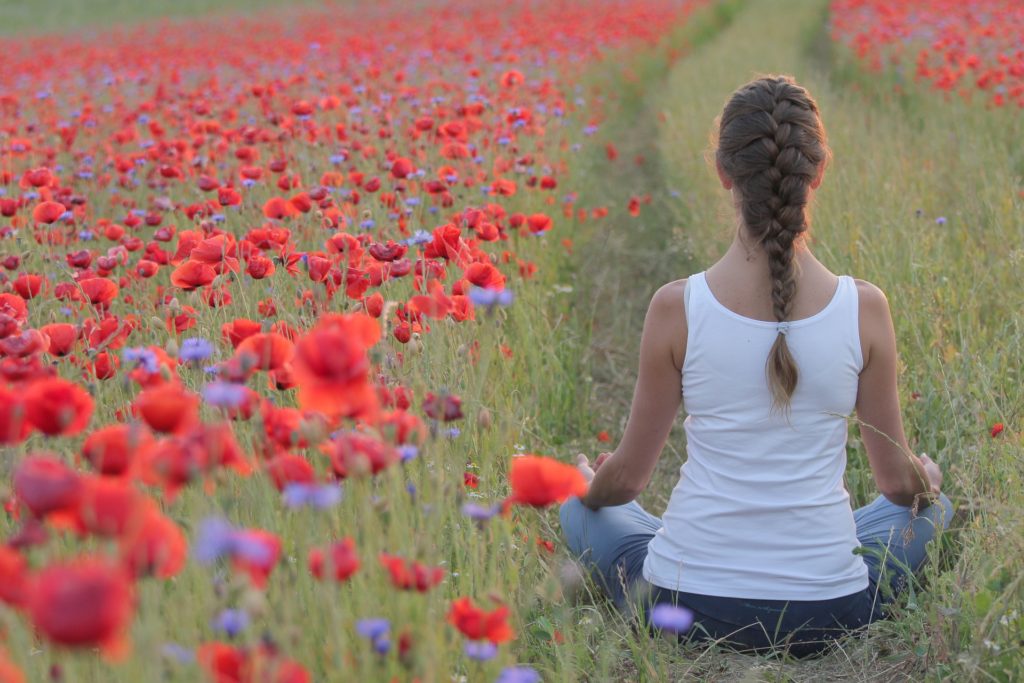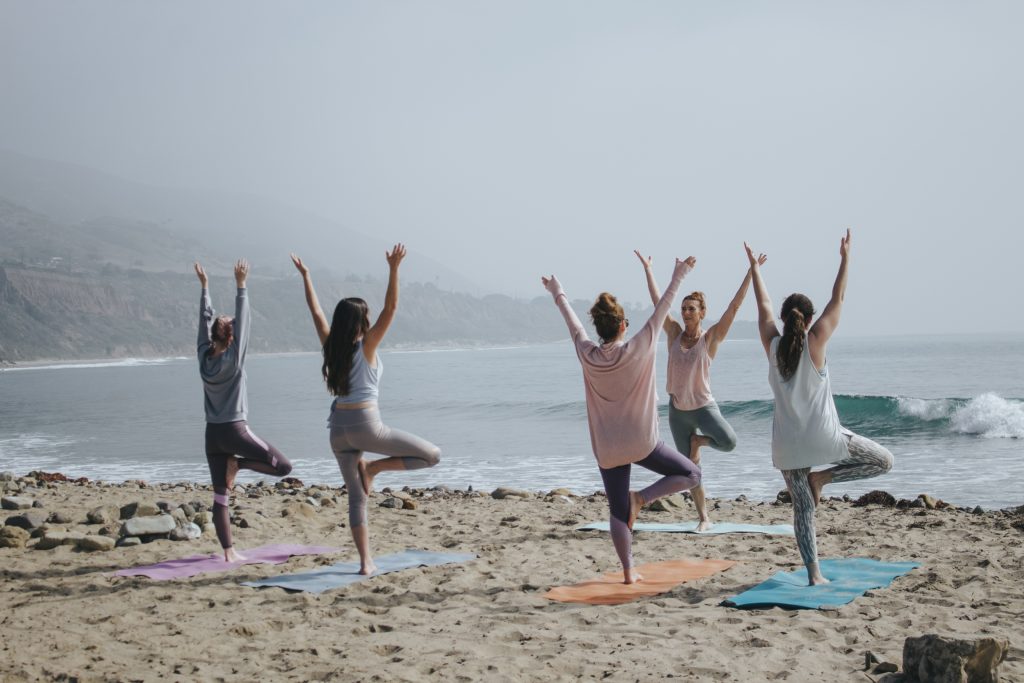lundi, 27 mai, 2019
« Tout ce que je paye aujourd’hui physiquement, c’est parce que je ne me suis pas occupé de moi correctement. », confiait Thierry Rozier au micro de I am an Equestrian[1] ; une lacune qui se révèle aujourd’hui être un frein dans la poursuite de sa carrière sportive. En effet, la préparation physique du cheval et le suivi de sa condition[2] sont les sujets principaux abordés en équitation. Et pourtant, c’est bien un sport qui se pratique à deux, le cheval et le cavalier ! Dans cet article, nous allons aborder la condition physique du cavalier en faisant une emphase toute particulière sur la pratique du yoga qui a déjà conquis de nombreux sportifs de haut niveau. Réputé bénéfique pour le corps et l’esprit, nous allons voir quels sont les besoins des cavaliers et en quoi le yoga peut être un allié dans ce sport.

L’équitation est un sport comme un autre qui demande aux deux partenaires d’avoir une bonne condition physique. Bien-sûr, en tant que cavalier, nous mettons souvent l’emphase sur le bien-être de notre cheval[3] et négligeons le nôtre.
Mais l’équitation demande au cheval et au cavalier de nombreuses qualités physiques et mentales. C’est pourquoi chaque cavalier doit aussi prendre soin de sa condition physique pour progresser. Ne dit-on pas « qui veut aller loin ménage sa monture » ?
Mais alors, quels sont mes besoins en tant que cavalière / cavalier ?
Avant tout, il faut comprendre que la condition physique est une combinaison de facteurs menant à la performance. Ces facteurs sont physiques, techniques, tactiques et mentaux[4].
En équitation, le cavalier est soumis aux forces de locomotion du cheval en plus des siennes. A cheval, tout le corps du cavalier travaille :
En plus d’une posture adéquate en selle, il faut pouvoir s’adapter aux réactions du cheval. Pour cela, plusieurs qualités physiques sont nécessaires[5] :
La cavalière ou le cavalier doit donc maîtriser son corps et être à la fois souple et endurant. Nous avions déjà abordé la nécessité de la préparation physique du cavalier[6] et notamment la place de l’échauffement du cavalier.
A présent, il est aussi important de souligner que l’équitation engendre une intériorisation et une prise de conscience de soi, par ce que l’on fait et ce que l’on pense. C’est à ce niveau que la pratique du yoga pourrait s’avérer intéressante.
Le yoga gagne sans cesse en popularité. Les premières représentations de postures de yoga remontent à 2 500 ans avant J.-C., pendant des siècles c’était une pratique marginale en Inde. Aujourd’hui, le yoga est pratiqué dans le monde entier et il existe de nombreux styles et approches.
Le yoga est une pratique qui permet, par le biais d’enchaînements de postures appelées « Asanas », couplé à une gestion du souffle « Pranayama », d’harmoniser la condition physique et psychique de l’individu.

Les deux branches « officielles » du yoga sont l’Ashtanga (le yoga dynamique) et le Hatha (un yoga plus tranquille), mais au sein de ces deux lignées, il y a de nombreuses sous-parties.
Beaucoup pensent ne pas pouvoir accéder au yoga parce qu’ils ne sont pas souples ou parce qu’ils n’ont pas le temps. Alors que pour faire du yoga, on n’a besoin de rien d’autre que soi : son corps et sa respiration. La souplesse n’est pas un prérequis non plus, justement, c’est la pratique régulière d’un sport comme le yoga qui permet d’assouplir son corps.
Les bienfaits d’une pratique régulière du yoga sont immenses sur le plan physique (souplesse, renforcement musculaire, renforcement des articulations, prévention et amélioration de troubles physiques divers, rééquilibrage énergétique, etc.), psychologiques (relaxation, amélioration du sommeil, gestion du stress, etc.), mais également en termes de développement personnel (lâcher prise, accueil de ses ressentis, écoute de soi, acceptation, estime de soi, etc.).
Le yoga va au-delà des positions impressionnantes, il ne faut pas confondre acrobatie et yoga !
En fonction de ce sur quoi chaque individu veut travailler, un style de yoga peut le soutenir. Quoi qu’il arrive, la première chose à intégrer est que le yoga est non-violent. Cela implique aussi une non-violence envers soi-même. Il faut donc veiller à ce que l’ego ne prenne pas le dessus, avec l’envie de se dépasser, pour éviter les blessures.
Il est conseillé de débuter la pratique du yoga avec un encadrement pour apprendre les techniques de bases mais il est aussi tout à fait possible de débuter le yoga chez soi à l’aide de vidéos en ligne, d’applications ou de livres.

La première chose à souligner est le lien entre les difficultés physiques ou psychiques de la cavalière ou du cavalier et leurs répercussions directes sur son cheval. Une cavalière ou un cavalier souple, disponible, avec un esprit clair et un corps sain atteindra beaucoup plus facilement la performance.
C’est d’ailleurs un prérequis pour le cavalier renommé Michel Robert, qui vit avec une volonté constante d’évolution mentale et physique. Cela s’appuie sur une hygiène de vie adaptée : sophrologie, yoga et une alimentation saine[7].
En harmonisant le corps et le mental, en permettant à l’individu d’améliorer sa forme physique et de gérer son stress, chaque cavalière ou cavalier va être capable d’être plus à l’écoute de ses sensations et de comprendre d’où viennent ses difficultés.
Selon son niveau, sa pratique et ses objectifs, chacun aura des besoins qui lui sont propres. Quel que soit le style de yoga choisi, les bénéfices tirés de cette pratique régulière seront multiples.
Force & endurance
Le yoga aide à développer la force et la tonicité par l’enchaînement de positions. Certaines postures vont solliciter votre souplesse, d’autres vont renforcer vos muscles, y compris vos muscles profonds. Contrairement à des pratiques comme la musculation, le yoga propose un travail en douceur qui respecte le corps et le renforce pour longtemps.
La majorité des positions en yoga vont travailler sur le renforcement de la ceinture abdominal et travailler l’alignement de la colonne vertébrale. C’est un parfait exercice pour permettre une bonne position du haut du corps lorsqu’on est à cheval.
Ce travail du corps permet de se préparer à l’effort mais aussi de mieux récupérer pour diminuer les potentielles courbatures. Un corps tonique et délié sera plus à même à enchaîner de nombreuses heures à cheval sans en souffrir.

Souplesse & équilibre
Le yoga ne demande pas au pratiquant d’être souple dès la première séance. Au contraire, le yoga est un des sports qui permet de devenir souple. Le corps humain est physiologiquement souple. La souplesse n’est donc pas un don ni un gain mais bien quelque chose qu’il est possible de retrouver ou de dévoiler !
La flexibilité qu’offre la pratique du yoga permet d’éviter les blessures, notamment lors de chutes de cheval. De plus, travailler sa souplesse permet une meilleure descente de jambe et offre plus de liant avec votre cheval.
En travaillant des postures demandant de l’équilibre, le yoga permet de prendre conscience de son corps, de ses atouts et ses faiblesses. C’est un formidable moyen de renouer avec ses sensations et mettre le doigts sur des blocages qu’on n’arrivait pas à détecter.
Le fait de détecter des blocages permettrait de faire le lien avec des difficultés rencontrées en selle. Un cheval contracté à main droite est peut-être la résultante d’une contraction de l’épaule droite du cavalier qui de ce fait, est plus dur dans sa main droite.
Ainsi, la pratique du yoga peut permettre d’établir une meilleure relation avec votre cheval grâce à un langage corporel plus clair.
Concentration & mental
Le yoga participe à la réduction du stress. Pendant la séance, l’attention est entièrement dirigée sur le corps et la respiration, on est dans “l’ici et maintenant”, ce qui est une forme de méditation. Une étude de l’Université de Boston publiée en 2010 a montré que le yoga était efficace pour soulager l’anxiété.
Sur le tapis, on est invité à prendre le temps d’écouter son corps, l’attention est constamment ramenée vers le souffle. Cela permet d’y développer sa capacité de concentration. Par exemple dans les exercices d’équilibre toute notre attention est requise pour maintenir la posture.

Cet exercice est excellent pour travailler ses capacités à se mettre dans sa bulle lorsqu’on est à cheval et s’affranchir du regard des autres. Ainsi concentré sur son cheval et soi-même, on est prêt à travailler dans les meilleures conditions et être attentif aux messages envoyés par notre cheval.
La pratique du yoga permet une meilleure gestion des émotions grâce aux techniques de respiration. En compétition, on voit souvent des cavaliers s’élancer en étant en apnée sur leur tour. Apprendre à respirer permet de gérer son stress et être présent dans ce que l’on fait. Par conséquent, on peut aisément améliorer ses performances.
Une pratique régulière couplée à la patience sont les clés pour sentir les bénéfices et les ressentir à cheval. Attention à ne pas trop pousser et vouloir aller trop loin, ça serait contre-productif et les potentiels bénéfices de la pratique en seraient anéantis.
L’effet cumulatif d’un travail progressif avec l’alternance de périodes de régénération sont LES facteurs déterminants de l’amélioration des capacités physiologiques, des habilités physiques et techniques et ainsi, de la performance du cavalier dans la durée.
Harmonie avec son cheval, position et coordination améliorées, respiration maîtrisée et stress géré, et si ce n’était pas ça les clés pour être mieux à cheval ? Si le yoga peut nous y amener, c’est peut-être une pratique complémentaire à nos séances à cheval que l’on peut envisager !
Et vous, hormis des séances de mise en selle, pratiquez-vous des sports complémentaires qui vous aide une fois à cheval ? Que faites-vous pour vous sentir bien à cheval ?
A très vite pour un nouvel article,
L’équipe Seaver 🙂
[1]https://www.facebook.com/iamanequestrian/photos/a.2238165633176703/2270225906637342/?type=3&theater
[2] https://seaverhorse.com/seaver-valide-scientifiquement/
[3] https://seaverhorse.com/notion-bien-etre-cheval/
[4] Source IFCE
[5] Source Equipédia
[6] https://seaverhorse.com/preparation-physique-quen-est-il-du-cavalier/
[7] Horse Academy by Michel Robert